Easy & Flavorful Maryland Crab Cakes Recipe You’ll Love
Succulent maryland crab cakes bring coastal charm right to your kitchen table.
Seafood enthusiasts appreciate the delicate balance of fresh ingredients and classic seasoning.
Chesapeake Bay traditions inspire this delightful dish that combines sweet crab meat with subtle herbs.
Crispy edges and tender centers make these cakes irresistible for any gathering.
Professional chefs and home cooks alike celebrate the simplicity of this regional specialty.
Each bite promises a rich, authentic flavor that connects you to maryland’s culinary heritage.
Maryland Crab Cakes Benefits
Ingredients for Maryland Crab Cakes
Main Protein:Binding Ingredients:Flavor Enhancers:Cooking Ingredients:Serving Suggestions:How to Prepare Maryland Crab Cakes
Step 1: Inspect Crab Meat
Carefully examine the crab meat in a bowl, checking thoroughly to remove any hidden shell fragments. Ensure the meat is clean and ready for mixing.
Step 2: Whip Up Flavor Blend
In a separate bowl, combine all wet and seasoning ingredients:Stir until the mixture looks smooth and well-integrated.
Step 3: Merge Crab and Seasoning
Gently fold the seasoning mixture into the crab meat.
Use a light touch to keep the crab lumps intact. Softly mix in breadcrumbs until everything binds together.
Step 4: Shape Delicate Patties
Create eight uniform patties using about 1/3 cup of mixture for each. Place the patties on a parchment-lined baking sheet.
Chill in the refrigerator for 15-20 minutes to help them hold their shape.
Step 5: Prepare Cooking Surface
Heat olive oil in a large skillet over medium-high heat.
Wait until the oil is hot and shimmering.
Step 6: Sizzle Golden Crab Cakes
Carefully place crab cakes in the hot skillet.
Cook for 3-4 minutes on each side until they turn a beautiful golden brown and are fully cooked through.
Step 7: Serve and Enjoy
Transfer the crispy crab cakes to a serving plate.
Accompany with tartar sauce and fresh lemon wedges for an extra burst of flavor. Serve immediately while hot and crisp.
Tips for Maryland Crab Cakes Success
Variations of Maryland Crab Cakes
Pairings That Complement Maryland Crab Cakes
Storage Guidelines for Maryland Crab Cakes
FAQs
Fresh lump or backfin crab meat from blue crabs are ideal for Maryland Crab Cakes, providing the most authentic flavor and texture.
Chilling the formed patties for 15-20 minutes before cooking helps them hold together, and using just enough breadcrumbs to bind without overwhelming the crab meat is crucial.
Yes, you can bake them at 400°F for about 10-12 minutes, flipping halfway through, though pan-frying gives a crispier exterior and more traditional Maryland-style result.
Print
Maryland Crab Cakes Recipe
- Total Time: 33 minutes
- Yield: 4 1x
Description
Authentic Maryland crab cakes showcase delicate lump crabmeat blended with classic coastal seasonings. Chesapeake Bay culinary traditions shine through this simple, elegant seafood preparation perfect for summer gatherings.
Ingredients
- 1 lb (454 g) jumbo lump crab meat (ensuring no shells remain)
- 1/4 cup panko bread crumbs
- 1/2 cup mayonnaise
- 1 large egg (beaten lightly)
- 2 tbsps freshly chopped parsley
- 1 tbsp Dijon mustard
- 1 tbsp olive oil
- 1 tsp Worcestershire sauce
- 1 tsp Tabasco sauce
- 1 tsp fresh lemon zest
- 1/8 tsp freshly ground pepper
Instructions
- Meticulously inspect crab meat in a bowl, removing any shell fragments to ensure a pristine texture.
- Whisk together mayonnaise, Dijon mustard, Worcestershire sauce, Tabasco, egg, ground pepper, lemon zest, and parsley in a separate bowl until thoroughly combined.
- Gently fold the seasoned mixture into the crab meat, taking care to maintain the delicate crab lumps’ structure.
- Softly integrate breadcrumbs into the mixture, creating a light and cohesive blend.
- Shape the crab mixture into 8 uniform patties, each roughly 1/3 cup in volume.
- Refrigerate the formed patties on a parchment-lined baking sheet for 15-20 minutes to enhance their stability.
- Heat olive oil in a large skillet over medium-high heat until shimmering.
- Carefully place crab cakes in the hot skillet, cooking for 3-4 minutes per side until achieving a crisp, golden-brown exterior.
- Transfer the perfectly cooked crab cakes to a serving plate, garnishing with fresh lemon wedges and accompanying tartar sauce for an authentic Maryland seafood experience.
Notes
- Check crab meat thoroughly to remove any shell fragments, ensuring a smooth and safe eating experience.
- Use fresh, high-quality lump crab meat for the best texture and flavor in your Maryland Crab Cakes.
- Chilling the formed patties helps them hold together during cooking, preventing them from falling apart in the skillet.
- For a gluten-free version, substitute breadcrumbs with almond flour or gluten-free panko crumbs to accommodate dietary restrictions.
- Prep Time: 25 minutes
- Cook Time: 8 minutes
- Category: Lunch, Dinner, Appetizer, Snacks
- Method: Frying
- Cuisine: American
Nutrition
- Serving Size: 4
- Calories: 290 kcal
- Sugar: 1 g
- Sodium: 520 mg
- Fat: 21 g
- Saturated Fat: 3 g
- Unsaturated Fat: 17 g
- Trans Fat: 0 g
- Carbohydrates: 8 g
- Fiber: 1 g
- Protein: 18 g
- Cholesterol: 115 mg

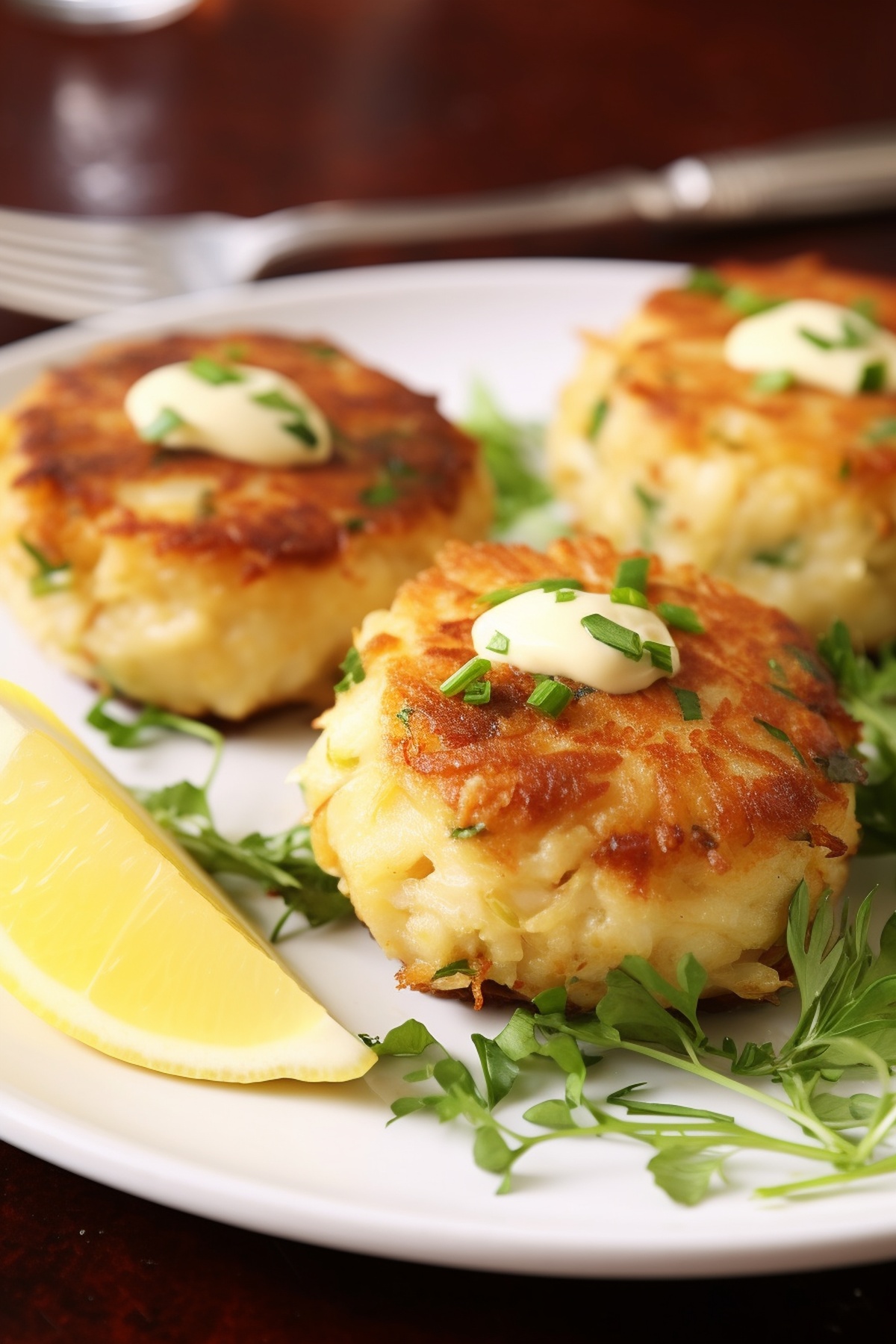

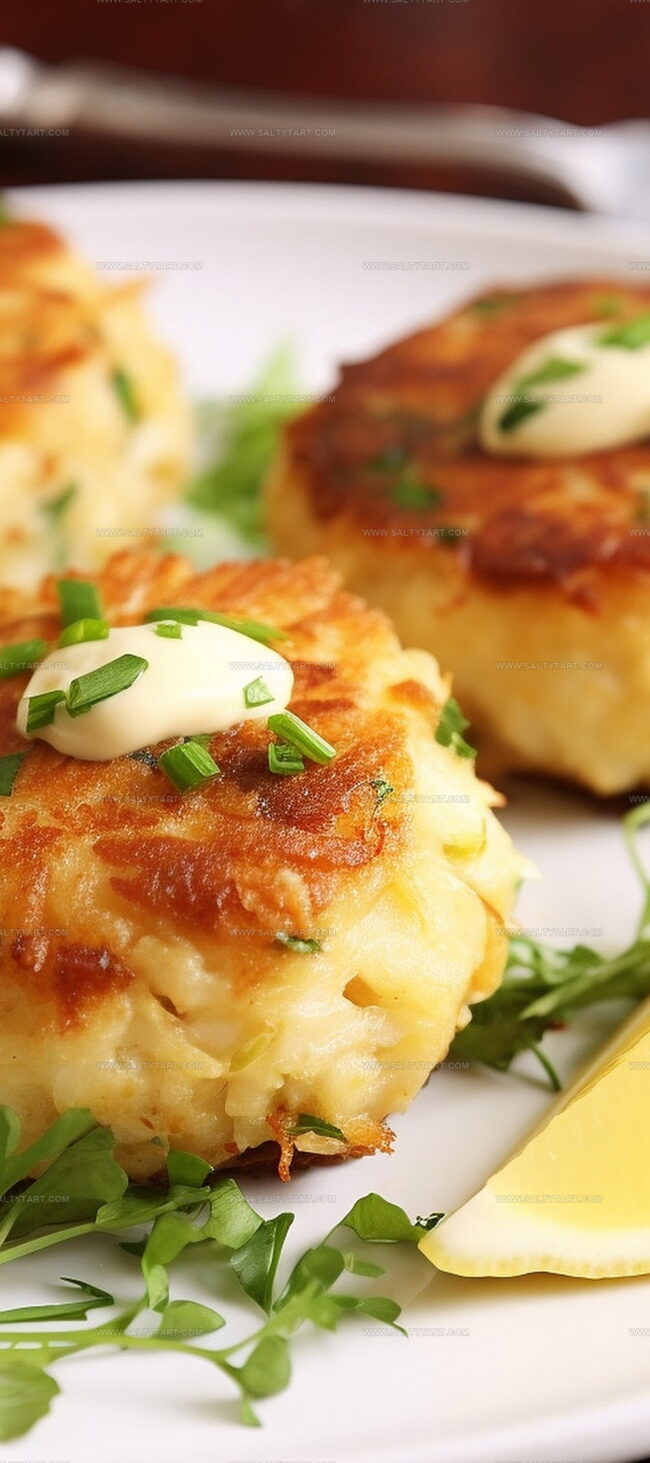
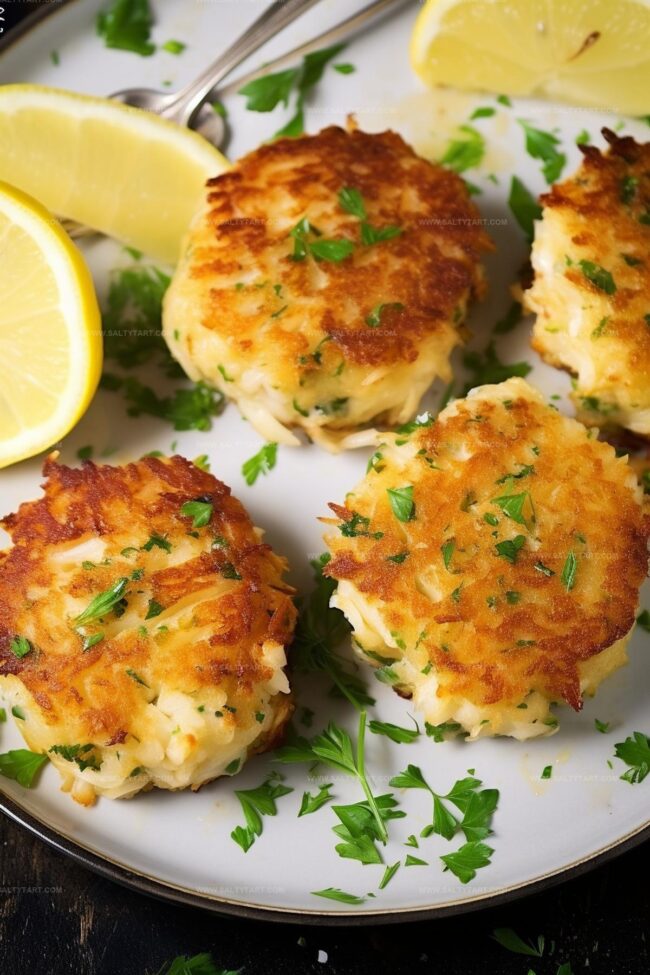
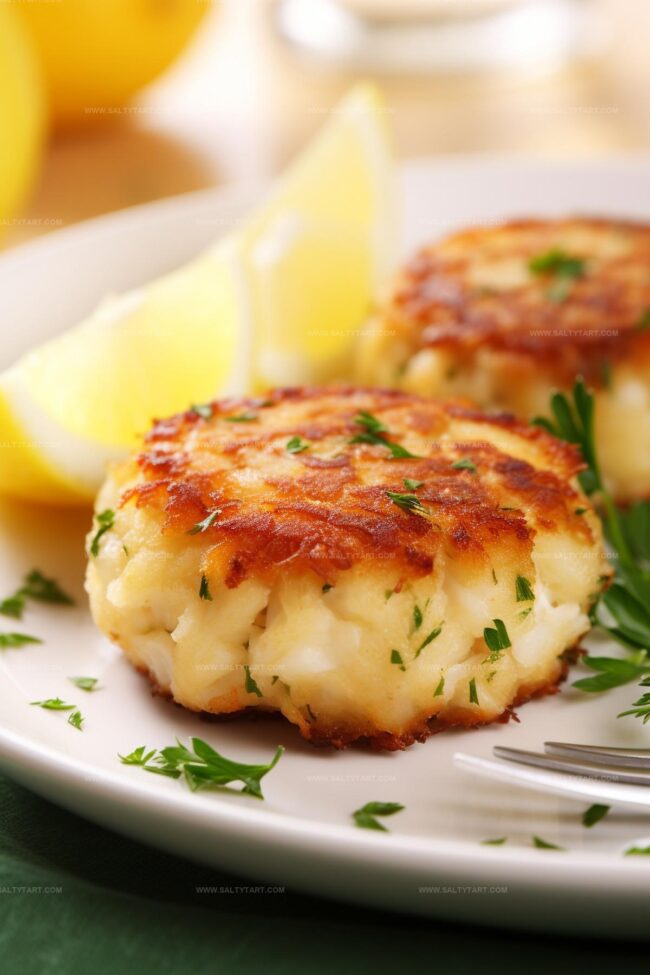
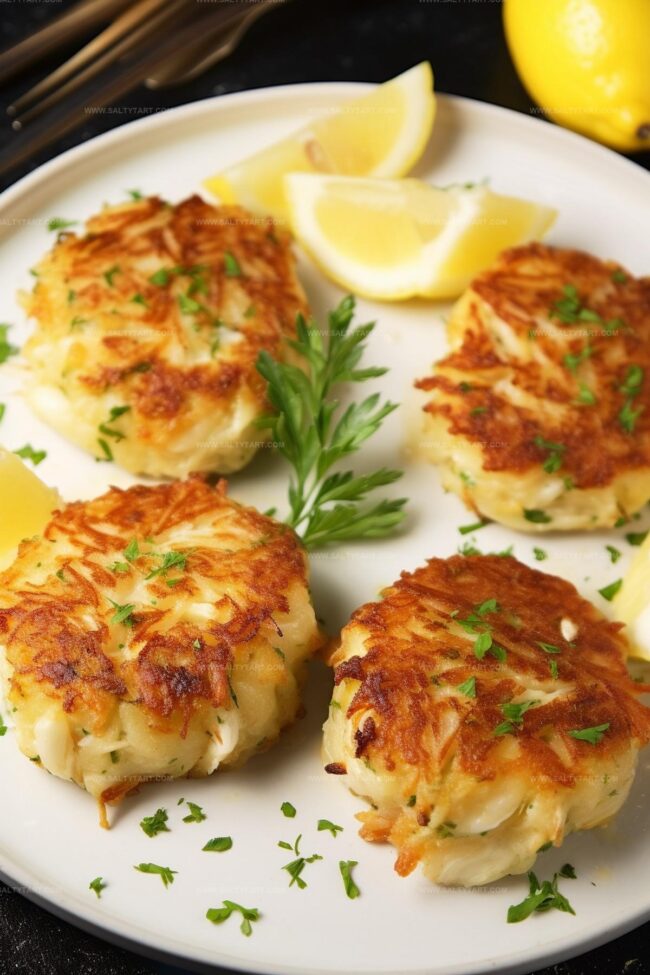


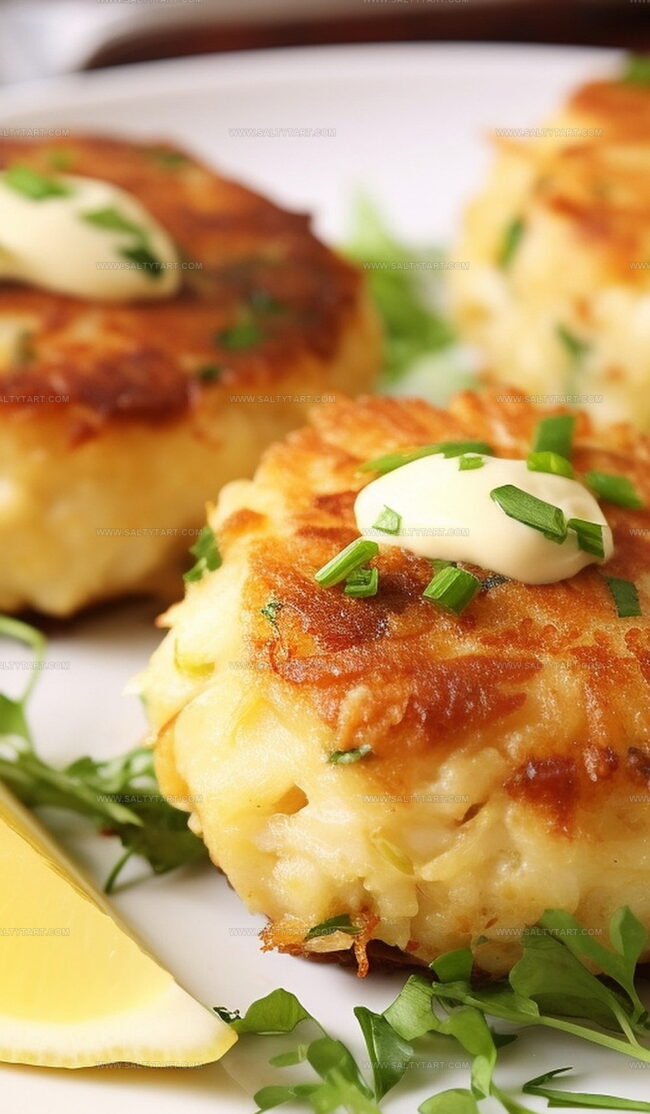
Mike Reynolds
Founder & Recipe Developer
Expertise
Farm-to-table cuisine, Seasonal recipe development, Sustainable cooking techniques, Food photography
Education
Asheville-Buncombe Technical Community College (A-B Tech)
Associate Degree in Culinary Arts
Mike studied culinary arts with a strong focus on farm-to-table principles and sustainable cooking. His training emphasized the importance of fresh, local ingredients and environmentally responsible practices in the kitchen.
Mike’s food journey began deep in the Blue Ridge Mountains, where weekends at farmers’ markets and home-cooked meals sparked a lifelong obsession with simple, seasonal eating.
After earning his Associate Degree in Culinary Arts from Asheville-Buncombe Technical Community College, he set out to bring farm-to-table cooking into everyday kitchens, without the fuss.
Mike’s philosophy is all about keeping it fresh, unfussy, and full of heart. When he’s not crafting new single-serving recipes, he’s hiking mountain trails, chatting with local farmers, or experimenting with wild ingredients in his backyard kitchen.